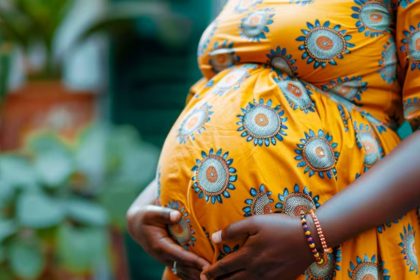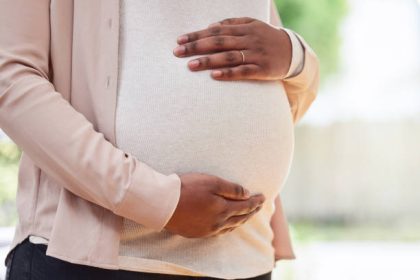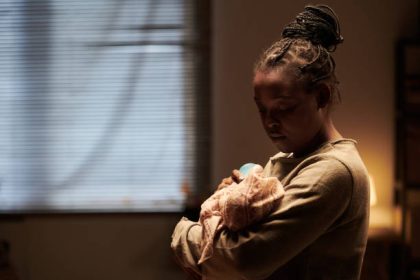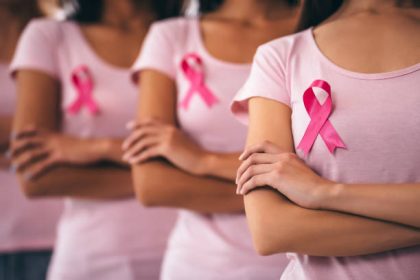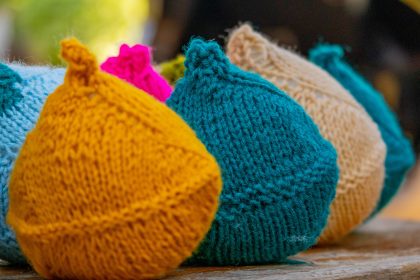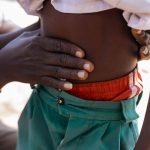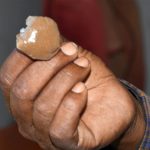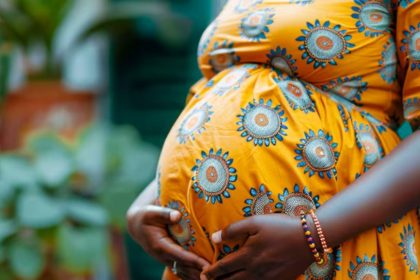Fibroids hijack pregnancies—triggering infertility, premature labour, placental abruption, stunted fetal growth and unplanned C-sections—turning motherhood’s journey into an obstacle race.
When I received Wanjiru’s pelvic scan request, the gynaecologist had scribbled “22/40” on the form, suggesting a pregnancy of 22 weeks. I prepared for a routine obstetric scan, but when I placed the ultrasound probe on her abdomen, what I saw on the screen left me stunned.
There was no baby.
Instead, I was staring at the largest fibroid I’ve encountered in my career. A monstrous, well-defined mass occupied almost her entire uterine cavity. It mimicked a foetus so perfectly, her lower belly curving out like a woman well into her second trimester.
Wanjiru, 28, had no history of pregnancy, no live birth, and no clue what she carried wasn’t new life, but a tumour that had been silently ravaging her uterus. Her only option was a hysterectomy – complete removal of the uterus.
Fibroids—non-cancerous tumours of the uterus are often misunderstood, misdiagnosed and in many cases, missed altogether. In Kenya, they’re affecting more women, at younger ages and with deeper consequences.
So, when did fibroids become part of our public health vocabulary?
You’ll hear the same old whispers: “Fibroids are a curse… they’re caused by witchcraft…”
In truth, they’ve always been there. Many older women lived through their entire reproductive years with undiagnosed fibroids, often discovered only during hysterectomies or post-mortem exams.
Ask around in many Kenyan communities and you’ll hear the same old whispers: “Fibroids are a curse… they’re caused by witchcraft… only barren women get them.” These ideas, while deeply rooted in culture and fear, aren’t true.
Medically speaking, fibroids or uterine leiomyomas are driven largely by hormones, particularly oestrogen and progesterone. These hormones stimulate the growth of the uterine lining during each menstrual cycle and can encourage fibroid development.
Some of the known risk factors include oestrogen dominance without enough progesterone to balance it; early onset of menstruation, specifically before age 10, and family history. Other risk factors are obesity and lack of childbirth.
Women with a mum or sister with fibroids are three times more likely to develop them
But even with science, myths still find their way into conversations: that contraceptives cause fibroids. While hormonal birth control can sometimes influence fibroid growth, it is not the root cause. In fact, some forms of contraception may reduce symptoms like heavy bleeding.
Another myth is that herbal remedies can “dissolve” fibroids. While traditional medicine plays a vital role in many communities, there is no clinical evidence that herbs can shrink fibroids entirely. Another common myth is that only women who cannot conceive get fibroids, yet women with fibroids go on to have healthy pregnancies.
A growing body of research suggests that fibroids may have a hereditary component. According to a 2021 review in the Journal of Women’s Health, women with a first-degree relative (mother or sister) with fibroids are about three times more likely to develop them. Another study published in Human Reproduction found that black women in particular were more likely to report a family history of fibroids.
Research shows fibroids run in families: women with a mother or sister who had them are three times more likely to get them, according to a 2021 review in the Journal of Women’s Health, while another published in Human Reproduction notes that Black women are especially likely to have them.
Many women with fibroids grapple with intrusive questions: Can I get pregnant?
Genetic research has identified specific gene variants, such as MED12 mutations, frequently found in fibroid tissue. These mutations don’t guarantee fibroids, but they point to familial susceptibility, with a 2018 study in Ghana showing that 38 per cent of women with fibroids had at least one female relative also diagnosed.
Fibroids are not just a medical condition; they touch the core of womanhood: fertility, sexual health, motherhood, and self-esteem. Many women with fibroids grapple with intrusive questions: Can I get pregnant? Will I enjoy life again? Is my womanhood under threat?
While many women with fibroids conceive and carry pregnancies to term, outcomes largely depend on the size, number and location of the fibroids. Submucosal fibroids (that grow inside the uterine cavity) are most likely to affect implantation and increase the risk of miscarriage, while intramural (within the uterine wall) or subserosal (on the outer surface) fibroids may have less impact unless they are large or multiple.
According to a 2022 study in the African Journal of Reproductive Health, 15–30 per cent of women with fibroids experience infertility-related complications. Other pregnancy-related risks include preterm labour, placental abruption, restricted foetal growth, malpresentation (baby not turning head-down) and caesarean delivery.
Fibroids can deeply affect a woman’s libido, comfort, and sexual confidence. Women report pain during intercourse (dyspareunia), bleeding after sex, and feeling less desirable, especially when bloating or fibroid size causes abdominal protrusion.
A widely believed myth in Kenya is that pregnancy cures fibroids
In a 2023 informal survey by Health Voices Kenya, 48 per cent of women with fibroids said they avoided sexual intimacy due to pain or embarrassment. Couples counselling and involving partners in the diagnosis and treatment journey can help reduce emotional strain and improve support.
A widely believed myth in Kenya and beyond is that pregnancy cures fibroids. While it’s true that some fibroids shrink post-delivery due to hormonal shifts, this is not guaranteed. The myth persists due to cultural pressure and societal norms that equate motherhood with womanhood, pushing pregnancy as a “solution” rather than a choice.
There are also medical half-truths claiming that hormonal changes during pregnancy can influence fibroid size. According to the Royal College of Obstetricians and Gynaecologists, 60–70 per cent of fibroids remain unchanged or may even grow during pregnancy, especially in the first trimester, due to increased oestrogen.
Uterine fibroids are a significant health concern for women in Kenya, with estimates suggesting that approximately 10–20 per cent of Kenyan women may be living with fibroids, translating to over 1.6 million cases nationwide.
Heavy bleeding is one of the most common symptoms, and heavy periods leading to anaemia
Globally, studies indicate that up to 70 per cent of women of reproductive age may develop fibroids by age 50. In Kenya, diagnoses are increasingly common among women as young as 15, highlighting a trend toward earlier onset.
Heavy bleeding is one of the most common symptoms, with many women experiencing menorrhagia or excessively prolonged and heavy periods leading to anaemia. Other symptoms are pelvic pain, backaches, and pain during intercourse.
Beyond the physical pain, there’s the emotional and mental toll. Anxiety, depression and frustration are common companions for women with fibroids. The struggle with infertility is also devastating, and stigma around reproductive health often leaves women feeling isolated.
For many women diagnosed with fibroids, the first word they hear is “surgery.” And quite often, it’s the final word too.
Surgery remains a valid and often necessary path, especially in severe cases. A myomectomy, where fibroids are removed while preserving the uterus, is often the go-to for women who still want children. In more extreme cases, a hysterectomy may be recommended.
In private hospitals, a myomectomy can range from Ksh150,000 to Ksh400,000
But must a woman always go under the knife to find relief? The answer is no. In recent years, less invasive options have emerged, giving hope to women who want to avoid surgery.
One is hormonal therapy like GnRH agonists, which can help shrink fibroids temporarily by lowering oestrogen levels, Uterine Artery Embolisation (UAE), which blocks blood supply to the fibroids, and natural therapies that reduce symptoms like pain and bleeding.
Despite the evolving treatment landscape, accessibility remains a major challenge. In private hospitals, a myomectomy can range from Ksh150,000 to Ksh400,000.
UAE can cost even more and is only offered in select urban hospitals with interventional radiology. Contrast this with public hospitals, where waiting lists for surgery are long and resources are limited. Many women in rural areas simply do not have the luxury of options.
They’re often referred directly for hysterectomy, sometimes as a blanket solution.
Fibroids are more than just benign growths—they are a public health concern, a social issue, and a silent burden for millions of women across Kenya.
From missed school days to fertility struggles, generational silence to marital strain, fibroids shake the core of womanhood. But change is possible. Whether a woman chooses motherhood, seeks intimacy, or surgery, the key is informed choice, early detection and supportive care.




